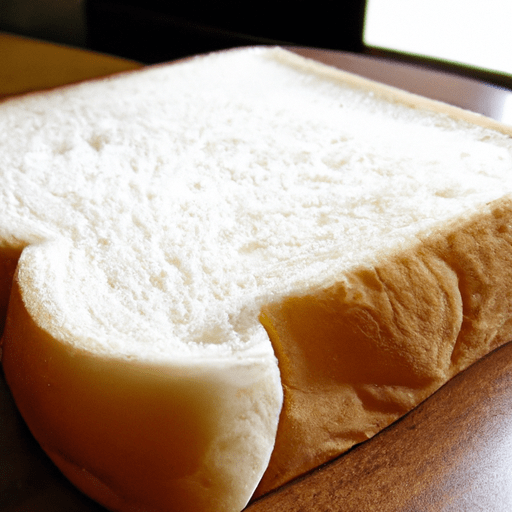The Wonderful World of White Bread
If there’s one staple that has been a reliable presence on our tables for centuries, it’s white bread. This versatile and beloved carbohydrate is a beloved choice for many households worldwide. Whether it’s a delicious sandwich, toast, or simply accompanying a meal, white bread’s soft and fluffy texture makes it a favorite among both the young and old alike. In this post, we will explore the taste, common uses, nutritional value, and fascinating history of this beloved bread.
Taste: A Delicate and Versatile Flavor
White bread has a mild and delicate flavor that serves as a canvas for countless culinary creations. Its taste can be described as slightly sweet with a touch of tanginess. When toasted, the crust develops a delightful crunch, while the bread itself turns warm and soft, releasing an irresistible aroma. Additionally, its neutral taste pairs well with both sweet and savory spreads, making it an ideal base for sandwiches, bruschetta, and other delectable creations.
Common Uses in Cooking: An All-Purpose Delight
White bread’s versatility is a testament to its enduring popularity. From classic peanut butter and jelly sandwiches to mouthwatering French toast, it’s safe to say that white bread knows how to please a crowd. Its ability to absorb flavors and retain moisture makes it perfect for sublime bread puddings, stuffing, and breadcrumbs.
Moreover, white bread offers a fluffy and non-overpowering texture that enhances the taste of burgers and sandwiches without overshadowing the fillings. It’s a great choice for those seeking a lighter alternative that won’t overpower the other ingredients.
Nutritional Value: The Real Deal
While white bread has received criticism in recent years due to its refined nature, it still possesses some nutritional value. It contains essential nutrients like carbohydrates for energy, dietary fiber, and a modest amount of protein. White bread can be enriched with additional nutrients such as iron and B-vitamins during the manufacturing process, helping to replenish lost nutrients.
However, it’s important to note that white bread is processed and lacks certain nutrients found in whole grain bread. Pairing it with nutrient-dense ingredients, like lean proteins, fresh vegetables, and healthy fats, can help create a balanced and nutritious meal.
Fun Facts and Historical Tidbits: Honoring White Bread’s Legacy
White bread has a rich history dating back thousands of years. In ancient civilizations, white bread was a symbol of wealth and prestige. The refining process used to create white bread was time-consuming and expensive, making it a status symbol often enjoyed by the elite.
In the early 20th century, technological advancements in milling and baking techniques allowed for mass production of affordable white bread, making it accessible to people of all backgrounds. It quickly became a staple food, appreciated for its convenience and versatility.
Today, white bread continues to hold a special place in the hearts and stomachs of many. It has remained a staple, with its enduring appeal residing in its simplicity, comforting taste, and endless culinary possibilities.
White bread may be simple, but its impact on our culinary landscape is anything but. Its delightful taste, wide range of uses in cooking, and nuanced history make it an integral part of our gastronomic world. So, the next time you enjoy a warm slice of toast or bite into a mouthwatering sandwich, remember the remarkable journey and legacy of white bread.
White Bread
White bread is a staple food in many cultures around the world. Here are some interesting facts about white bread:
Origin: Bread has been a dietary staple for thousands of years, but the modern form of white bread we know today originated in ancient Egypt around 5,000 years ago. The process of milling wheat into refined flour allowed for the production of whiter bread, which was initially reserved for the wealthy.
Common Uses: White bread is widely used for making sandwiches, toast, and various baked goods. Its soft and fluffy texture makes it a popular choice for sandwiches as it pairs well with a wide range of fillings, from savory to sweet.
Nutritional Benefits: While white bread is a good source of carbohydrates, it is generally considered to be less nutritious compared to whole grain bread. During the refining process, the bran and germ parts of the wheat grain are removed, resulting in a loss of fiber, vitamins, and minerals. However, white bread is often fortified with vitamins and minerals to compensate for the loss.
Unique Properties: White bread has a soft and light texture due to its fine and uniform crumb structure. This is achieved by refining the wheat flour to remove the bran and germ, which also results in a longer shelf life compared to whole grain bread.
Historical Significance: In various societies, the color of bread has been associated with social class. In ancient Rome, for example, white bread was considered a luxury food for the wealthy, while darker bread made from coarser grains was consumed by the lower classes. This association perpetuated throughout history until more recent times.
Cultural Variations: The type of white bread can vary across cultures. For example, baguettes are a popular type of white bread in France, while sliced white bread loaves are common in many North American households.
Remember to consider your dietary needs and preferences when choosing the type of bread that suits you best.




Use the share button below if you liked it.
It makes me smile, when I see it.